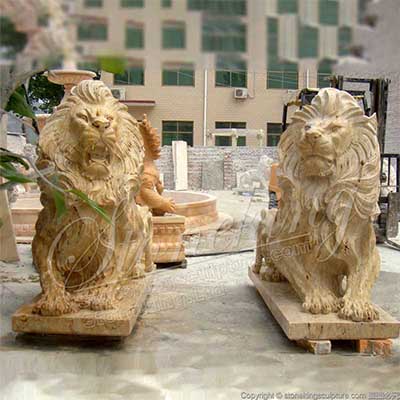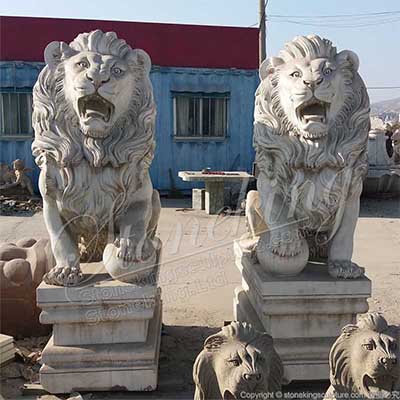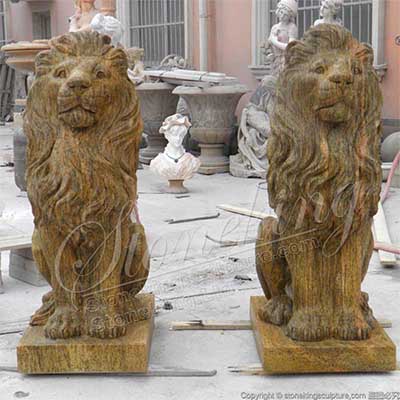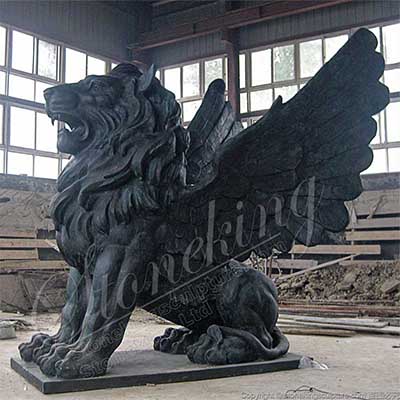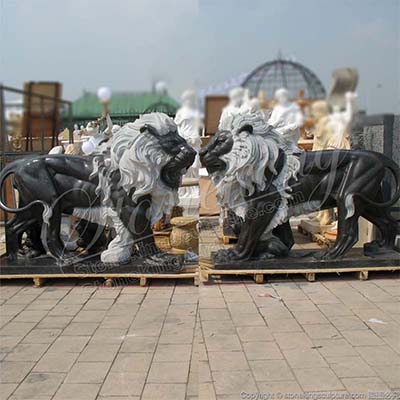Factory Supply Outdoor Large Stone Animal Statues for Garden and Home Decor for sale
Transform your space with this pair of large white marble lion statues. The majestic stone animal statues serve as regal focal points, enhancing outdoor gardens and estates with their enduring charm and refined taste.
Size: Customized Size
Material: Solid White Marble
Usage: outdoor decoration
Technique: polished surface
Advantage: Wholesale price offered
The pair of lion statues are expertly hand carved from high quality white marble, standing as monumental guardians with their regal stature. The lion's roaring mouth is intricately detailed, symbolizing courage and dominance. The intricate details of the lion's mane and dynamic posture are meticulously carved by our skilled artisans, offering a lifelike presentation that exudes majestic presence. With one paw resting atop of a ball, the lion statues not only enhance the lion's grandeur but also serve as a symbol of authority and control.
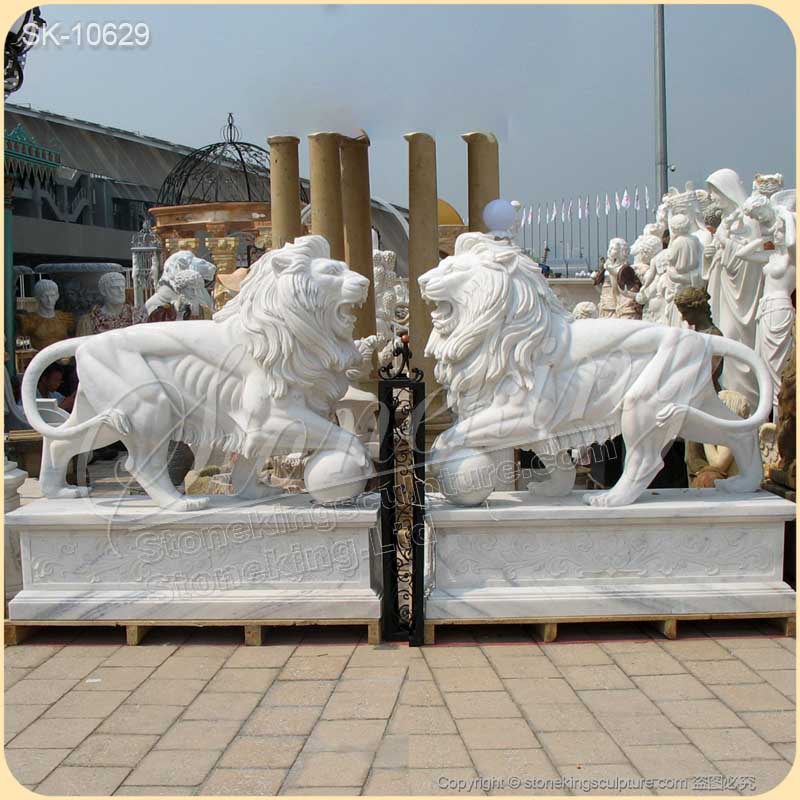
Whether you are looking to add a regal touch to your home's entrance, enhance a garden's landscape, or elevate the elegance of a grand estate, the large lion statues exude an aura of strength, power and protection. The natural properties of marble ensure that the animal statues can withstand various weather conditions while retaining their beauty and integrity over time.
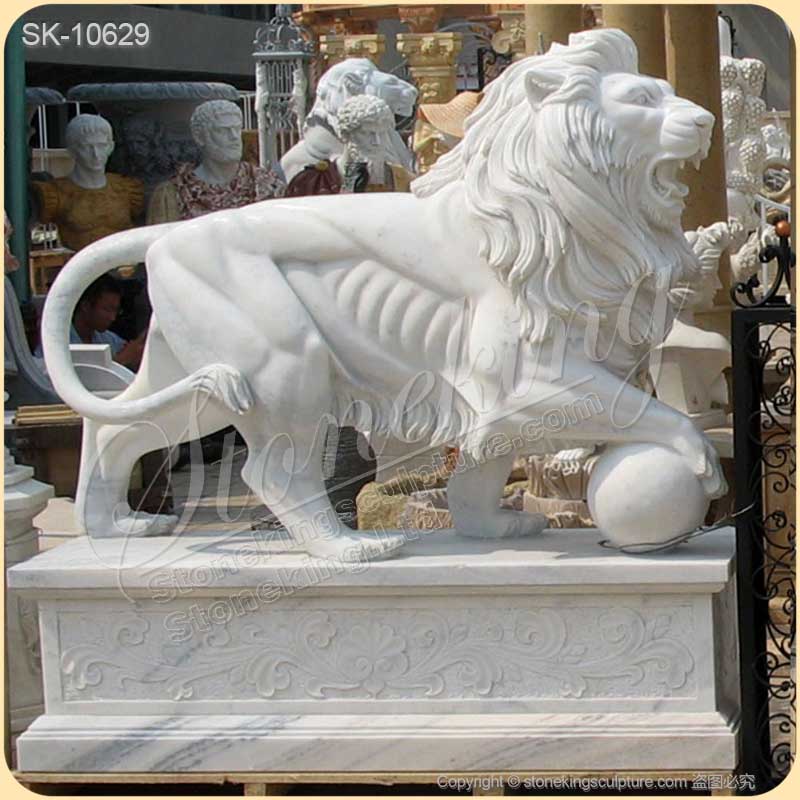
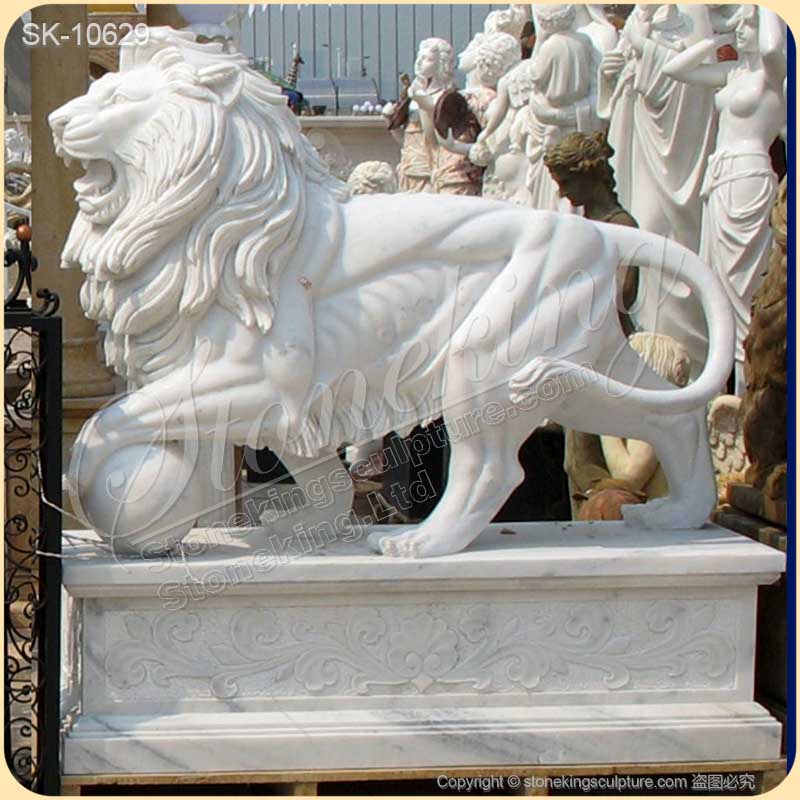
Table of Contents
What are Stone Animal Statues?
How Should I Maintain and Clean Stone Animal Statues?
What Types of Stone are Commonly Used for Animal Statues?
What are the Benefits of Using Stone for Animal Statues Compared to Other Materials?
Can Stone Animal Statues be Customized?
How Much do Stone Animal Statues Typically Cost?
Where can Stone Animal Statues be Used?
What are Some Popular Styles of Stone Animal Statues?
What are the Benefits of Having Stone Animal Statues in Landscaping?
Are Stone Animal Statues Suitable for Indoor or Outdoor Use?
What is the Cultural or Historical Significance of Stone Animal Statues?
What are Stone Animal Statues?
Stone animal statues are intricate carvings or sculptures made from various types of stone, depicting animals in a range of styles and forms. These statues have been a prominent feature in art and cultural history across the globe, serving diverse purposes from religious and ceremonial to decorative and commemorative. Natural stone materials such as marble, granite, limestone, sandstone and travertine are used for the carving, serving as both artistic creations and cultural symbols. They offer a window into the values, beliefs and skills of the societies that produced them.
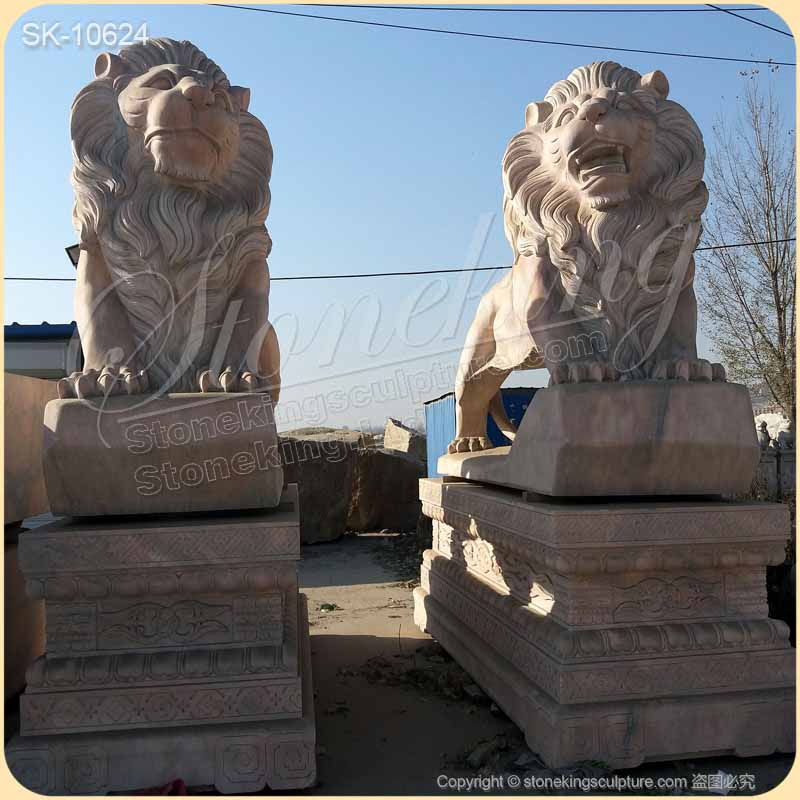
In ancient Egypt, stone animal statues were often associated with deities and were placed in temples or tombs to invoke divine protection. The Greeks and Romans also had a deep appreciation for stone animals statues, symbolizing different aspects of their mythology and values. In Asian cultures, stone animal statues are deeply ingrained in religious and cultural practices.
The styles of stone animal statues can range from highly realistic depictions to stylized and abstract forms. In contemporary times, they continue to be popular in public art, private collections and as garden ornaments. These statues have served as a symbols of protection, power and beauty, reflecting the diverse ways in which human societies have engaged with the natural world and their artistic heritage.
How Should I Maintain and Clean Stone Animal Statues?
For basic cleaning, use a soft brush or a dry cloth to remove loose dirt and dust from the surface. Dusting regularly helps prevent the accumulatio of debris and grime. For a more thorough clean, mix a small amount of mild soap with water, and use a soft cloth or sponge to gently clean the surface. Make sure to rinse the statue thoroughly with clean water to remove any soap residue. And please avoid harsh chemicals to acidic cleaners as these can erode the stone.
For stubborn stains, such as organic stains, grease or oil stains, you can use a mixture of water and baking soda, then apply it to the stained area, let it sit for a few minutes, and then scrub gently with a soft brush and rinse thoroughly. Moss and algae can sometimes grow on the stone animal statues, especially in damp environments. For these stains, please mix water with a small amount of bleach or use a commercial algae remover, then apply the solution to the affected areas with a soft brush, gently scrub and rinse thoroughly.
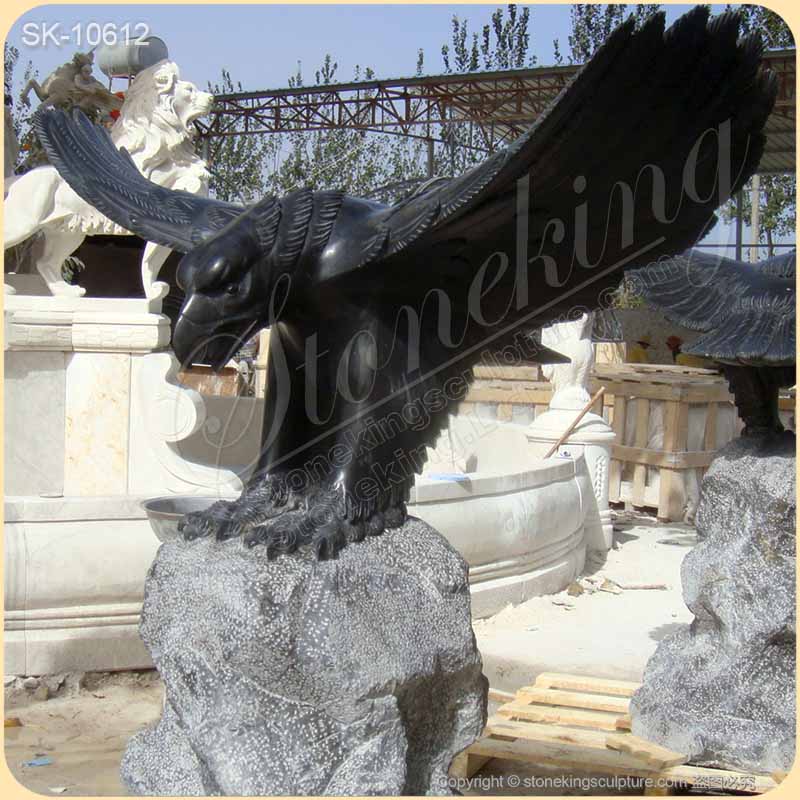
Regularly check the stone animal statues for any signs of damage such as cracks, chips or any signs of wear. Early detection of damage can prevent more severe issues and costly repairs. For repairs, use a stone-specific adhesive or epoxy resin. Clean the area around the damage before applying the adhesive to ensure a strong bond. Regular care will not only preserves their appearance but also extends their lifespan, ensuring they remain a cherished part of your decor for years to come.
What Types of Stone are Commonly Used for Animal Statues?
Marble Animal Statues
Marble is one of most popular choices for animal statues due to its fine grain and ability to be polished to a smooth, lustrous finish. The relatively soft nature compared to other stones makes it easier for artists to carve for intricate animal statues, and its rich textures and variety of colors, including white, black, green, red, beige and other colors, allow for highly detailed and elegant animal sculptures.
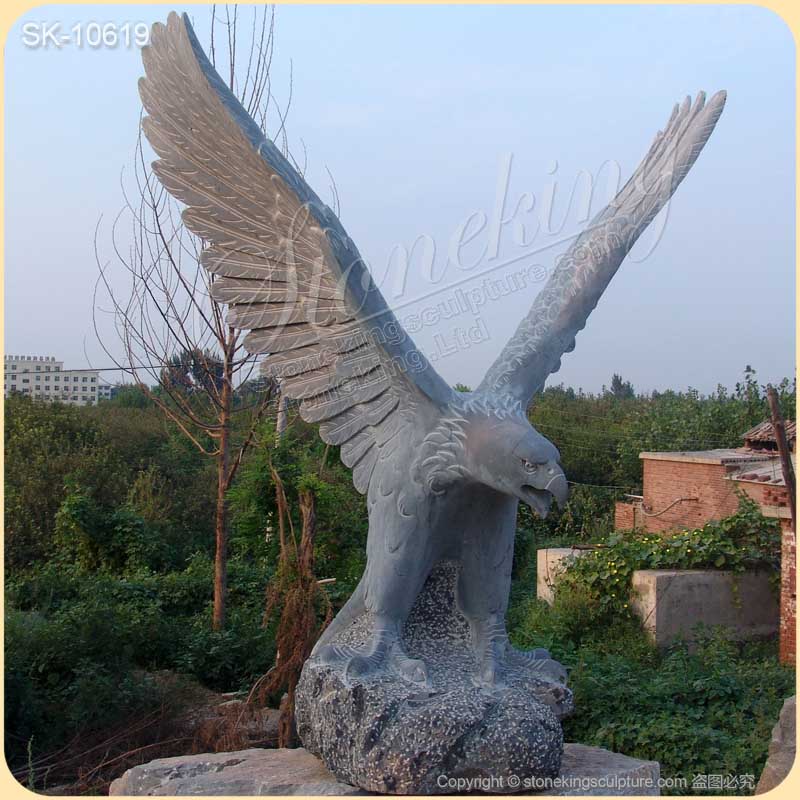
Marble animal statues are durable, making them suitable for both indoor and outdoor display. This longevity contributes to the lasting value and historical significance of marble animal statues.
Granite Animal Statues
Granite is highly durable and versatile stone that is well-suited for outdoor animal statues. Its hardness and resistance to weathering and erosion make it an excellent choice for animal statues that need to withstand the elements. Granite animal statues require minimal upkeep and can withstand harsh environmental conditions.
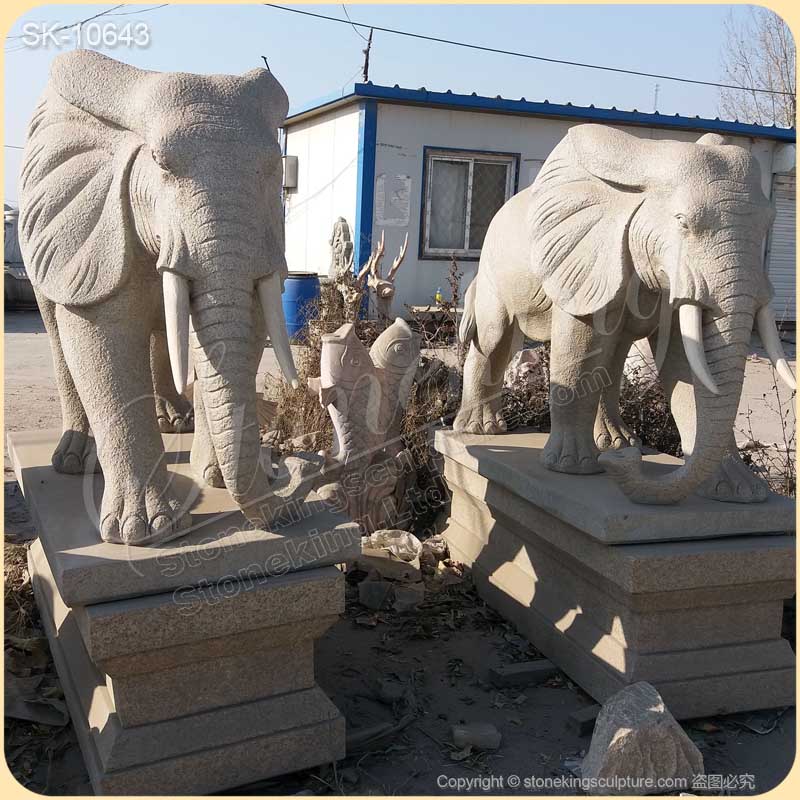
This stone's durability may require more effort to carve, but it rewards sculptors with a lasting, robust piece that can endure years of exposure to environmental conditions. Due to its toughness, granite is often used for large-scale animals statues that would be placed in parks, monuments and public spaces. And it can be polished to a high gloss, which enhances its appearance. It comes in a range of colors, including gray, black, white, red, yellow and beige. The variety and intensity of colors can provide a distinctive look to the statues.
Travertine Animal Statues
Travertine features a natural, warm palette of creams, tans and browns, which can complement various design styles from classical to contemporary. Travertine is a sedimentary rock that is relatively hard and resistant to wear and tear, making it ideal for outdoor animal statues, and it can withstand various weather conditions without deteriorating.
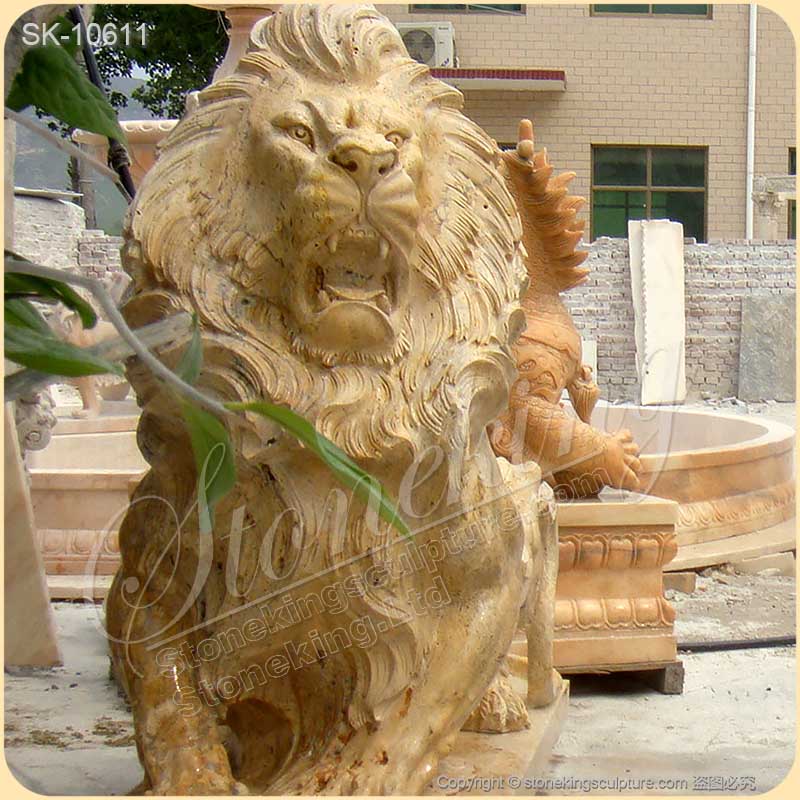
The porous nature of travertine means it can absorb liquids and stains more easily than non-porous materials. It can be sculpted with a high degree of precision, allowing for a wide range of animal forms and sizes.
Sandstone Animal Statues
Sandstone is another sedimentary rock composed of sand-sized mineral particles. It has a granular texture, which makes it relatively easy to work with. The ease of carving means that sandstone animal statues can be produced in various sizes and forms, from small garden ornaments to grand, life-sized figures. They require relatively low maintenance, and this ease of maintenance makes them a practical choice for public spaces and private gardens where animal statues are exposed to the elements.
Sandstone animal statues are quite resilient when they it comes to outdoor conditions. It can withstand varying weather conditions, including rain, sun and frost, making it suitable for both indoor an outdoor placements. With proper care and periodic maintenance, sandstone animal statues can last for decades or even centuries, retaining their beauty and structural integrity over time.
Limestone Animal Statues
Limestone is a sedimentary rock that is relatively soft compared to marble and granite. It is easier to carve and shape, which makes it a favored choice for artisans who wish to create more detailed or abstract forms. It is commonly used for carving detailed and ornate animal statues, especially in historical and traditional art.
The limestone often features a more natural, rustic appearance, which can complement various artistic styles. Its warm, natural hues can range from light beige, cream, gray to deeper browns, adding a unique touch to each animal statue.
What are the Benefits of Using Stone for Animal Statues Compared to Other Materials?
Durability and Longevity
One of the most compelling reasons to choose stone for animal statues is its remarkable durability. Stone is inherently resistant to weathering and wear. Unlike other materials that may rust, rot, degrade, or deteriorate over time, stone animal statues can withstand harsh weather conditions, including extreme temperatures, rain and UV radiation. This makes them ideal for outdoor settings, such as gardens, park and memorials. This durability ensures that the stone animal statues can be enjoyed for generations and often become historical landmarks in their own right. The longevity of stone animal statues also means that they can serve as lasting tributes, memorials or garden ornaments that stand the test of time.
Aesthetic Appeal and Variety
Stone, with its inherent solidity and permanence, imparts a sense of grandeur and dignity to the animal statues. Different types of stone contribute distinct characteristics to these statue. The natural textures, veining and color variations in stone can enhance the visual appeal of animal statues, giving them a sophisticated and authentic look. From the smooth, refined surface of marble to the rugged texture of granite or the intricate patterns in limestone, each type of stone brings its unique character to the animal sculpture. The intricate details and fine textures of the natural stone bring each animal to life, capturing the essence of its form and character.
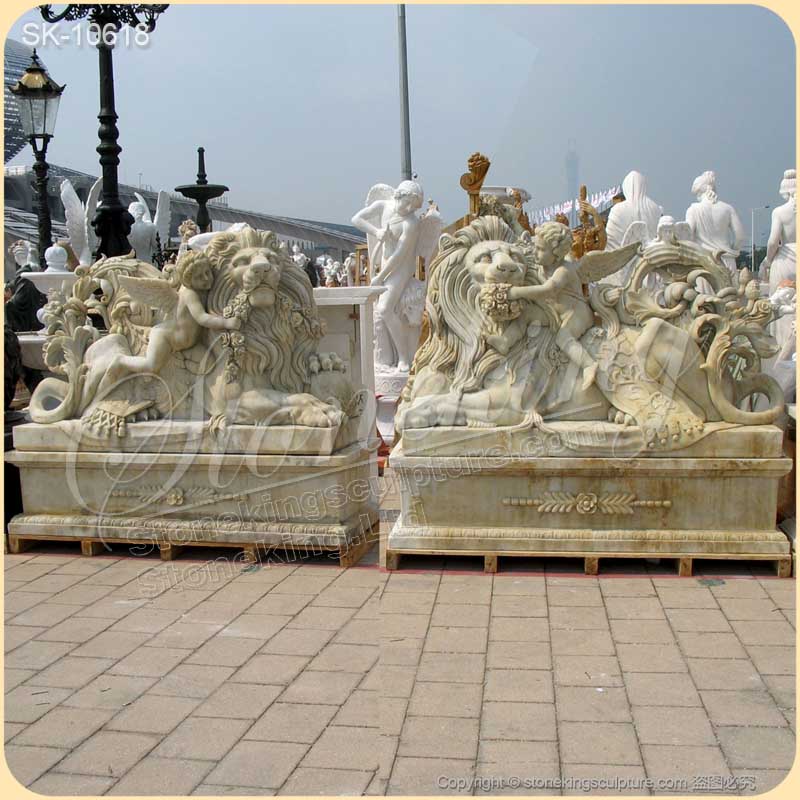
Whether you are looking for majestic wildlife, playful domestic animals or mythical creatures, the diversity in design ensures there is a stone animal statue to suit every taste and space. Beyond purely decorative purposes, stone animal statues can serve functional roles, such as garden ornaments, architectural elements, or even as markers in historical or religious contexts. And the sizes can vary widely, from small, intricately detailed pieces for indoor display to large, imposing figures that serve in outdoor spaces.
Low Maintenance
Stone is very durable material that can withstand various weather conditions, unlike wood or metal, it doesn't easily rot, rust or degrade over time. Stone animal statues are resistant to pests like insects or mold, which can be a problem for other materials. Once installed, stone animal statues generally do not require much upkeep. They just need occasionally washing with water and a mild detergent to keep the animals statues looking their best.
Inherent Strength and Stability
Stones are known for their density and hardness, making them ideal for creating durable animal statues. The inherent strength of stone materials means they can support significant weight and withstand environmental pressures, providing excellent structural integrity for larger and more complex animal statues. This is particularly advantageous for monumental pieces intended to be placed in public spaces where stability and robustness are crucial. Stone animal statues are often designed with a focus on balance and stability, preventing he statues from tipping over.
Traditional and Classical Significance
Stone has been used in sculpture for thousands of years, from ancient Greek and Roman statues to classical Renaissance works. Choosing stone for animal statues can align contemporary works with a legacy of enduring artistry, evoking a sense of historical continuity and respect for artistic traditions.
This connection to historical tradition can imbue modern stone animal statues with added meaning and resonance.
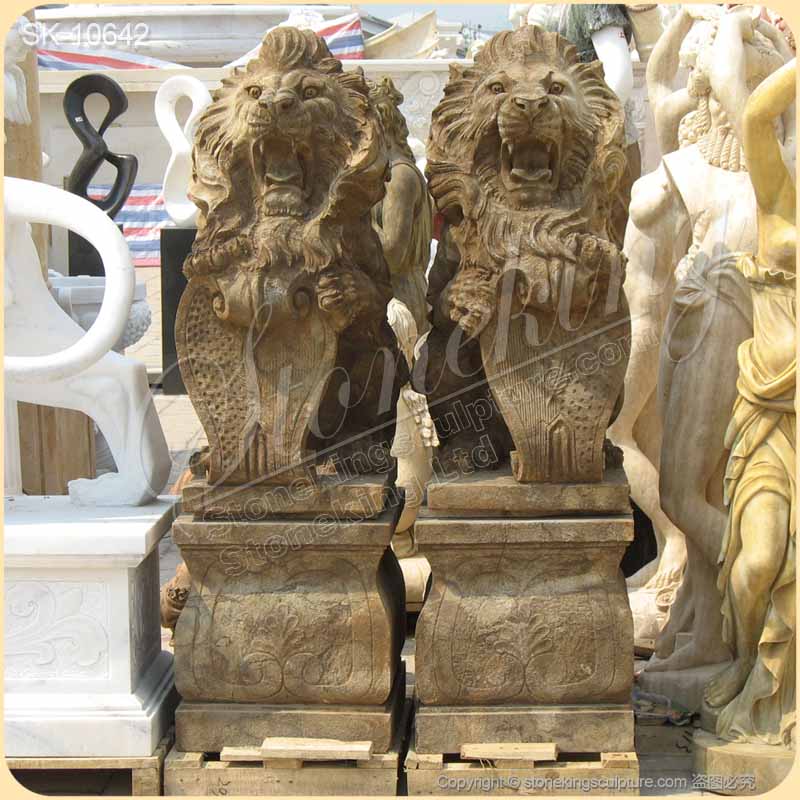
Environmental and Eco-Friendly
Stone is a natural material, and its use can have a lower environmental impact compared to synthetic materials. When sourced responsibly, stone can be a more sustainable choice. Additionally, stone does not involve the use of potentially harmful chemicals or processes, making it a more eco-friendly option. In some cases, stone animal statues can be refurbished or repurposed, extending their lifecycle and minimizing environmental impact. They are a more environmentally responsible choice for decorative and artistic purposes.
Can Stone Animal Statues be Customized?
Various stone could be used for animal statues, each offering different textures, colors and durability. There are the marble, granite, limestone, travertine and sandstone could be customized to suit your preferences, and the choice of stone can impact the final appearance and longevity of the animal statues.
The design and styles of the animal statues could be customized to align with your vision. This can range from highly detailed and realistic representations of animals to more abstract or stylized forms. Customization allows you to work with the designer to develop a concept that fits your vision. Additional personal touches such as inscriptions or special symbols could be carved on the animal statues to make them truly unique.
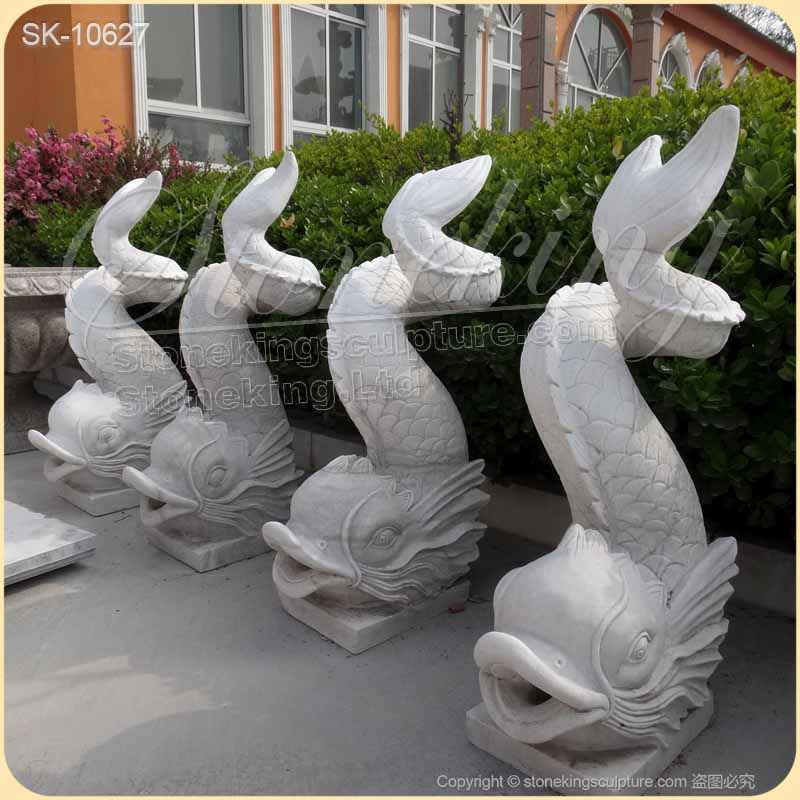
The sizes could be bespoke to fit your space. Whether you need a small, delicate piece to fit in a niche or a grand, imposing piece to be a focal point of your landscape, they could be customized to achieve the desired effect. The customized animal statues would meet your aesthetic and functional requirements, providing a lasting and meaningful addition to any space.
How Much do Stone Animal Statues Typically Cost?
The cost of stone animal statues varies greatly based on factors such as size, type of stone, craftsmanship and customization. Small, simple animal statues may cost less, while large, intricately detailed pieces can be more expensive. Generally, the cost might range from US300 to USD5000.
One of the most significant factors affecting the cost is their size. Small and simple animal statues might cost between about USD300 and USD1000. These pieces are often feature basic designs and smaller dimensions, easily for carving and may be mass-produced. For the medium-sizes animal statues and large animals, they typically need more detailed carving, the price can run from USD1000 to over USD5000.
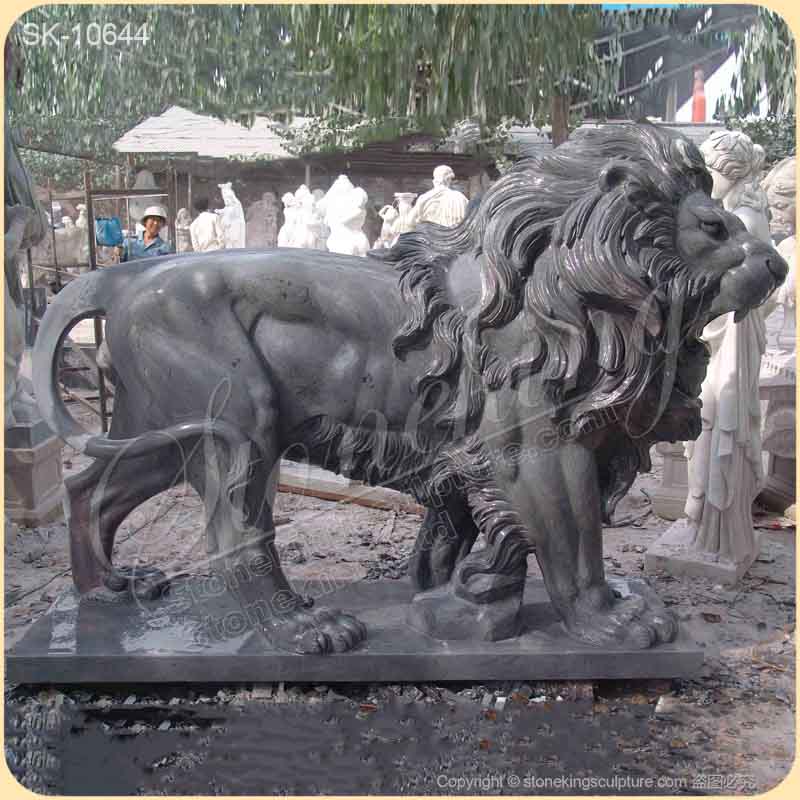
The type of stone used is another major determinant of the cost. There are the marble, granite, limestone, travertine and sandstone that are usually used for the production, so different stone materials may offer different prices.
The level of craftsmanship and the complexity of the design greatly affect the cost. Intricate, detailed designs require more skilled craftsmanship and time to complete, thus raising the price. Hand carved animal statues with elaborate details or customized features typically cost more than mass-produced or simpler designs. By understanding the above variables, it may help you make an informed decision that best fits your needs and budget.
Where can Stone Animal Statues be Used?
Gardens and Landscapes
Stone animal statues are a popular choice for gardens, providing a whimsical or serene element to the landscape. Use large statues, like elephant statues or lion statues, as focal points in the garden to create a stunning centerpiece. Sitting lion statues or other animal statues can line pathways, flower beds or garden borders, acting as guardians and enhancing the natural beauty of the surroundings.
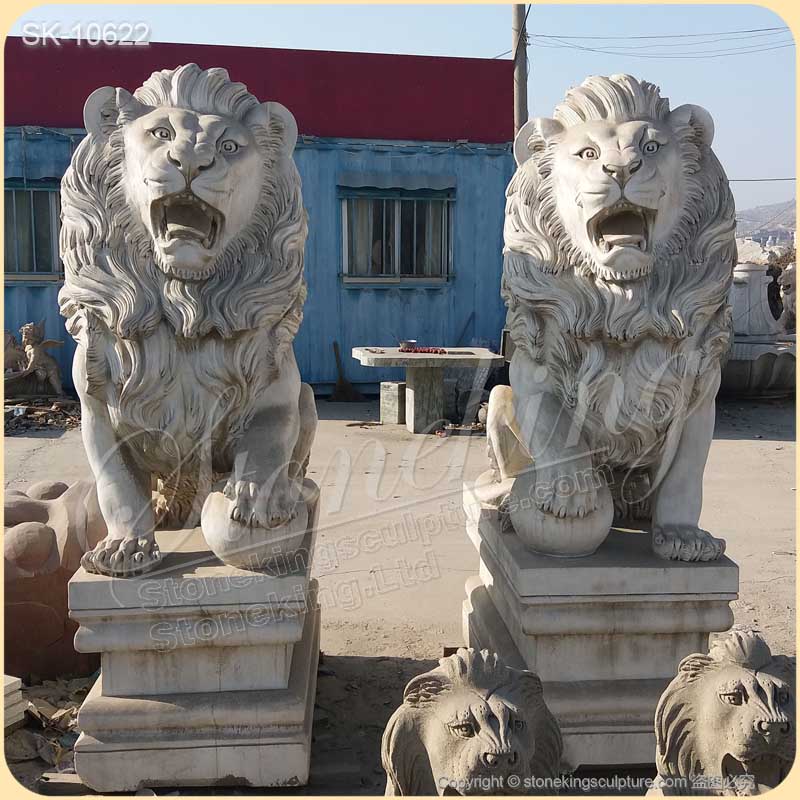
Public Spaces
In parks, plazas and community centers, stone animal statues often serve as public art. These sculptures can serve both decorative and educational purposes, often representing local wildlife or cultural symbols. Animal figures can evoke feelings of nostalgia or affection connecting people emotionally to their surroundings.
Residential Decor
Homeowners often incorporate stone animal statues in their front yards, backyards or patios, enhancing the ambiance and making the area more inviting. The roaring lion statues could be placed at the entrance of the estate to ward off evil spirits and signify authority, the gargoyle yard statue can be positioned in the patio to protect the space and inhabitants, or the eagle yard statue could be arranged in the yards to serve as eye-catching centerpiece.
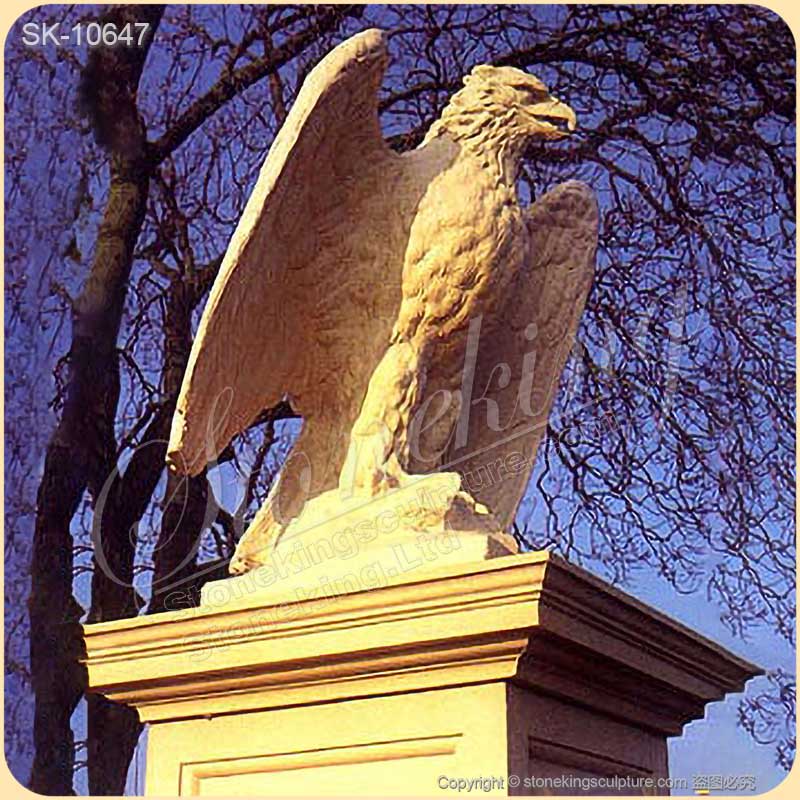
Commercial Spaces
Businesses can also benefit from the addition of stone animal statues. Restaurants, hotels, and spas often use these statues to create a specific theme or ambiance. For instance, a seaside resort may feature fish statues or dolphins, while in a luxury hotel, a more refined small elephant statue can evoke unique aesthetic and enhance customer experience. In spas and wellness center the serene animals motifs are used to create a calming atmosphere for relaxation and rejuvenation.
Religious and Spiritual Settings
In many cultures, animal statues hold significant symbolic meaning. They can be found in temples, shrines and other religious site, often representing deities or spiritual concepts. For instance, white elephant statue may symbolize strength and wisdom in Hindu culture, while lions represent courage and protection in various traditions.
Memorials and Commemorative Sites
Stone animal statues are sometimes used in memorials to honor beloved pets or symbolize wildlife preservation efforts. Placing such statues in a meaningful location can serve as a tribute, allowing individuals to reflect on their memories or the importance of animal welfare.
What are Some Popular Styles of Stone Animal Statues?
Classical Greek and Roman Animal Statues
In ancient Greece, animal statues were often associated with religious and symbolic meanings. Common figures include majestic large lion statues, graceful deer and formidable eagles. Animals such as rams and bulls also represented in stone, often associated with sacrificial practices. Mythological creatures like griffins and sphinxes appeared in Greek art, serving as guardians or protectors.
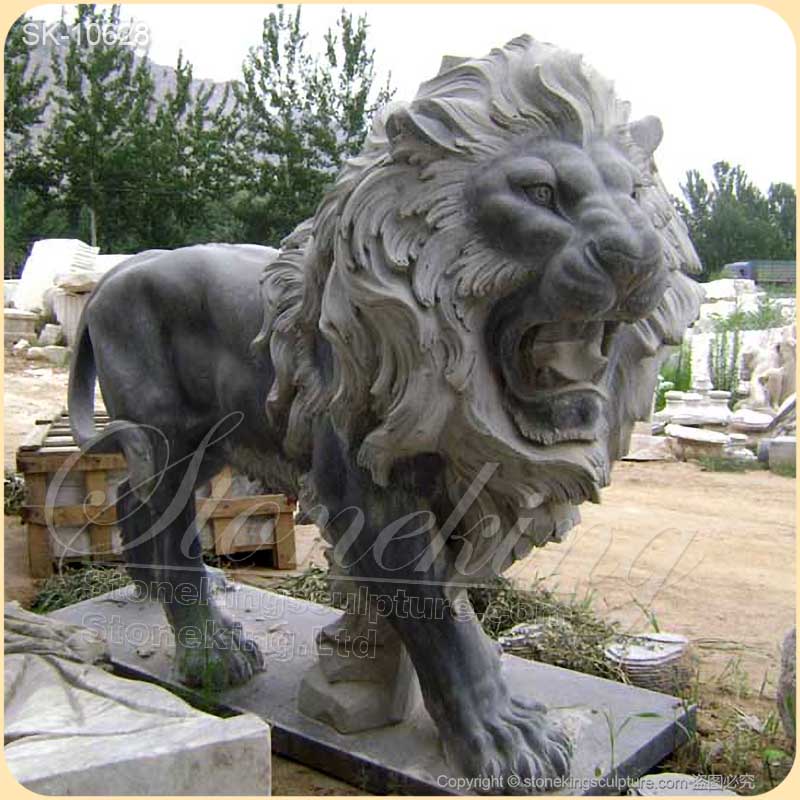
The Romans frequently used animal statues in funerary contexts. Statues of dogs, horses and birds were common in tombs, symbolizing the deceased's traits or status. They are also employed in public monuments and commemorative structures. Roman gardens and public places often included elaborate fountains and decorative animal statues, and wealthy Romans displayed animal statues as a display of luxury and taste. These animal statues could be highly detailed and were often positioned prominently in private villas and public spaces.
Asian-inspired Stone Animal Statues
Asian-inspired stone animal statues are a fascinating and diverse category of art that reflect the rich cultural and spiritual traditions of various Asian societies. They can be found in a variety of forms and serve multiple purposes, from guardian figures to symbols of prosperity and protection. Common animals include the Chinese Foo Dogs, Japanese Komainu and Indian elephants or Ganesha.
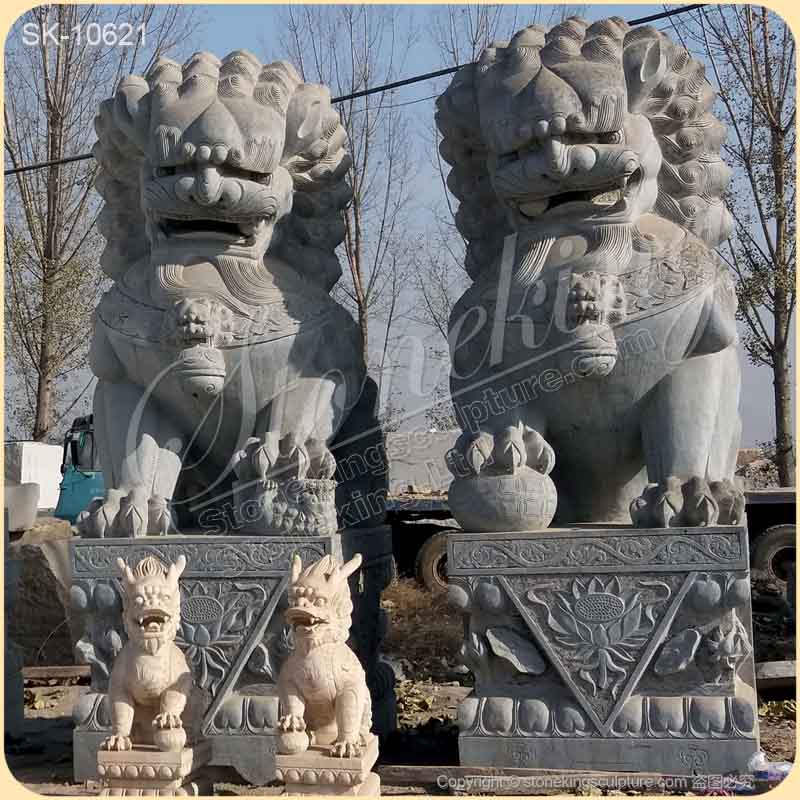
In Asian cultures, these animal statues are imbued with deep spiritual and protective meanings. Foo dogs are believed to ward off evil spirits, while Komainu statues guard entrances to sacred spaces. Ganesha, often depicted in stone, symbolizes wisdom and prosperity.
Victorian Garden Animal Statues
Originating during the 19th century, the Victorian garden stone animal statues reflect the period's fascination with nature, classical art and elaborate ornamentation. Many Victorian garden animal statues are inspired by classical art, featuring figures such as life size lions, sphinxes and other mythological creatures. Statues of domestic animals, such as dogs, cats and horses, were also popular. There representations often conveyed a sense of pastoral charm and were used to enhance the garden's homely, welcoming atmosphere.
Exotic and wild animals, such as life size elephant statues, tigers and other exotic creatures were used to evoke a sense of adventure and the unknown. These statues were placed strategically in gardens to create visual interest and garden culture.
Modern Abstract and Minimalist Animal Statues
Modern stone animal statues often embrace abstract and minimalist designs. These sculptures may use clean lines, geometric shapes, or simplified forms to represent animals in a contemporary style. The abstraction can range from slightly modified realistic forms to completely non-representational shapes that evoke the idea of the animal through suggestion rather than depiction.
The creation of modern abstract and minimalist stone animal statues often involves a deliberate choice of materials and forms to evoke certain feelings or ideas. They invite interpretations based on viewer's personal experiences and emotions, making each encounter with the sculpture a unique interaction. They often feature in galleries, public spaces and private collections, where they serve as focal points for reflection and discussion.
Rustic and Natural Stone Animal Statues
Rustic and natural stone animal statues celebrate the raw beauty of natural materials. These animal statues often feature a more rugged, unrefined appearance, emphasizing the natural textures and imperfections of the stone. These animal statues can depict a wide range of animals, from majestic wildlife like deer and bears to more domestic creatures such as dogs and birds.
The design of rustic animal statues often emphasizes the natural posture and features of the animals, capturing their essence with an artistic yet realistic touch. These animal statues are popular in rural and countryside settings, adding a touch of nature's beauty and artistry to any landscape design.
Mythological and Fantasy Animal Statues
Mythological and fantasy animal statues have captivated imaginations for centuries, serving as symbols, guardians and storytellers in various cultures around the world. They often depict fantastical creatures or playful interpretations of real animals, including creatures from folklore, mythology, fantasy literature and legend, such as dragons, griffins, sphinxes, chimeras, Pegasus and unicorns. They are often detailed and dramatic, reflecting the fantastical nature of their subjects.
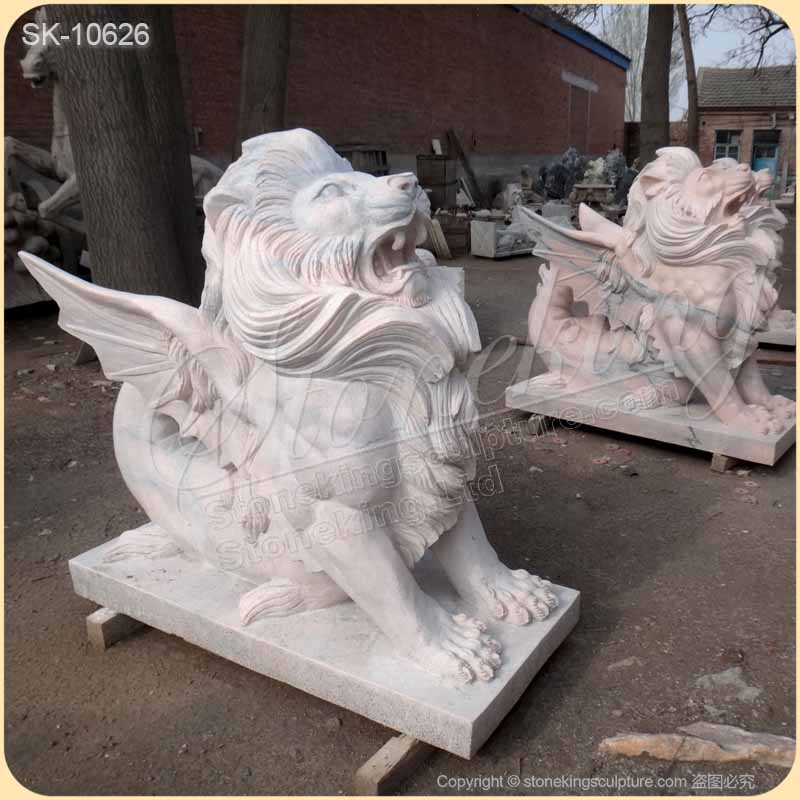
These animal statues not only serve as artistic expressions but also as cultural artifacts that reflect the values, fears and aspirations of the societies that create them. They often adorn temples, castles, gardens and public spaces, acting as both decorative elements and carriers of mythological narratives.
What are the Benefits of Having Stone Animal Statues in Landscaping?
Aesthetic Appeal
Stone animal statues add a timeless and classic touch to any garden or outdoor area, serving as eye-catching focal points that draw attention and creating visual interest. The natural texture and color of stone can complement a variety of landscaping themes, from traditional to contemporary. Whether used a centerpiece in a formal garden or a charming accent in a cottage-style setting, stone animal statues bring a unique character that can elevate the overall design.
Durability and Low Maintenance
Stone animal statues are resistant to weathering, making them an excellent choice for outdoor use. They will not easily degrade or fade over time, so this longevity means that they can withstand the elements, including rain, sun, snow and UV radiation, without losing their charm or requiring frequent maintenance. They will a long-lasting investment for your garden or yard, retaining their beauty and integrity for years to come.
Versatility in Design
Stone animal statues come in a wide range of styles, sizes and designs, allowing for a great versatility in landscaping. They range from realistic depictions that capture fine details the animal's form and expression to abstract and stylized representations that convey symbolic meanings. The sizes range from little elephant statues of decorative pieces for garden and indoor spaces, the medium sizes for garden display, public spaces or home decor, to extra large lion statues for outdoors or parks. This versatility means that animal statues can be used in various settings, such as garden beds, pathways, water features, or even as standalone pieces in open spaces.
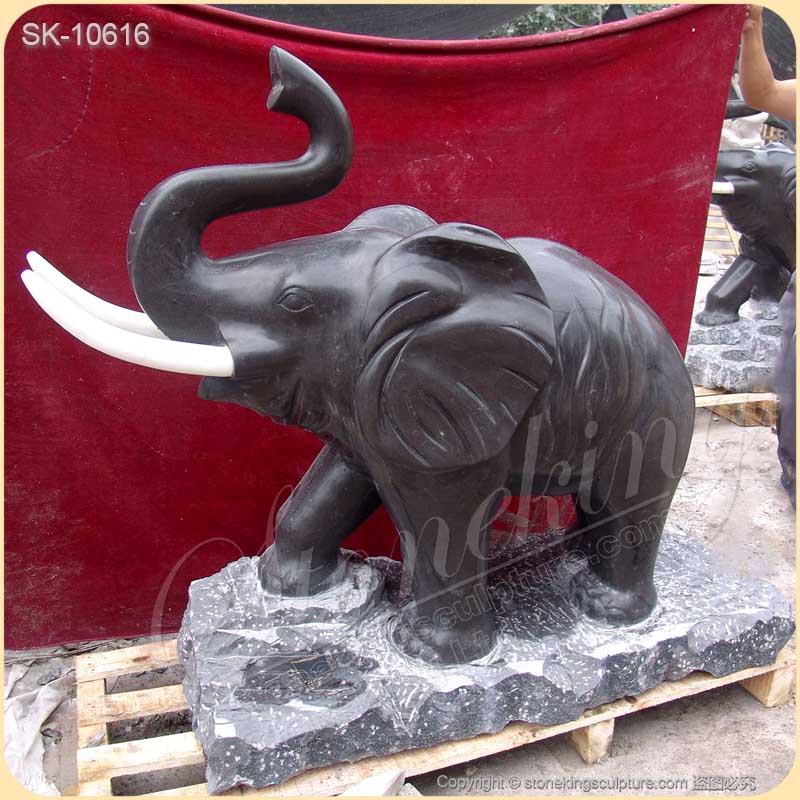
Symbolism and Personalization
Animal statues can carry symbolic meanings that reflect personal preferences or cultural significance. In ancient society, the animal statues symbolize strength, wisdom, power and protection, acting as physical manifestations of spiritual concepts of divine attributes. They often serve as guardians or protectors in architectural and ritual contexts. On a more personal level, stone animal statues can be deeply personalized to reflect individual or familial identities. In modern times, people often commission custom stone carvings to commemorate loved ones or mark significant life events. Their enduring presence not only connects us to ancient traditions but also personalizes our experiences, offering a lasting tribute to the qualities and memories they represent.
Wildlife-Friendly
While stone animal statues are not living creatures, they can contribute to a wildlife-friendly garden. Certain animal statues can create a sense of habitat or provide shelter for small creatures. Animal statues that mimic natural forms or feature realistic textures can blend more seamlessly into their surroundings, offering better integration into natural habitats. Statues depicting local wildlife can raise awareness about native species and their habitats, enhancing public engagement with nature and promoting eco-friendly practices.
Are Stone Animal Statues Suitable for Indoor or Outdoor Use?
Stone animal statues are inherently durable and can withstand various weather conditions, including rain, snow and extreme temperatures This resilience makes them ideal for outdoor settings like gardens, patios or lawns. They can enhance the natural beauty of a landscape, providing a timeless and classic look. While they may need occasional cleaning to remove dirt and moss, they generally remains resilient against environmental wear and tear. They generally require minimal maintenance, occasional cleaning just needed to maintain their appearance. They can serve as focal points or complementary elements in garden landscapes, enhancing the overall design with their natural, textural appearance.
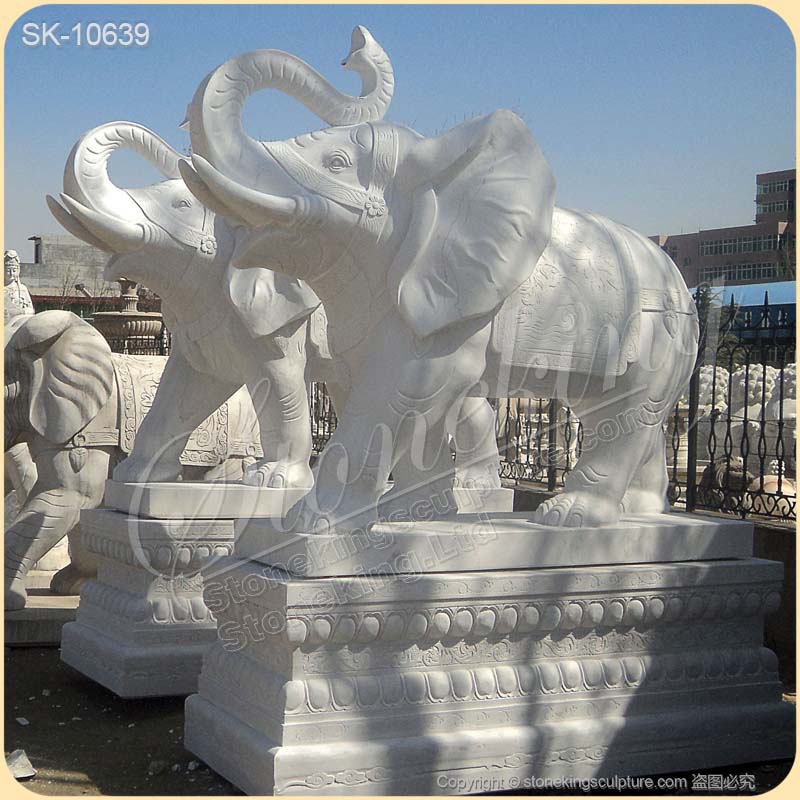
For indoor decorations, stone animal statues will add an element of grandeur and natural beauty to spaces such as living rooms, entryways or even offices. They also complement various interior styles, including traditional, rustic and contemporary, and the natural variations of the stone materials will add a distinctive and personalized element to indoor decor. Besides, stone animal statues are typically heavy and stable, which means that they are less likely to be easily knocked over or moved around, making them a stable addition to indoor spaces. Given their durability and timeless appeal, stone animal statues can be considered a long-term investment in the home decor, potentially increasing the overall value of your interior space.
What is the Cultural or Historical Significance of Stone Animal Statues?
In many cultures, stone animal statues were imbued with deep religious and symbolic meaning. In ancient Egypt, animal statues such as cats, falcons and crocodiles were often associated with deities. Similarly, in ancient Greece and Rome, stone animal statues were often used in public spaces and private contexts, reflecting both artistic and symbolic values. In Asian cultures, stone animal statues often have spiritual and protective roles. In ancient China, stone lions, known as "Foo Dogs", were often placed at the entrances of temples, palaces and important buildings to ward off evil spirits and protect the structure. In South Asia, stone animal statues have religious significance in Hindu, Buddhist and Jain traditions.
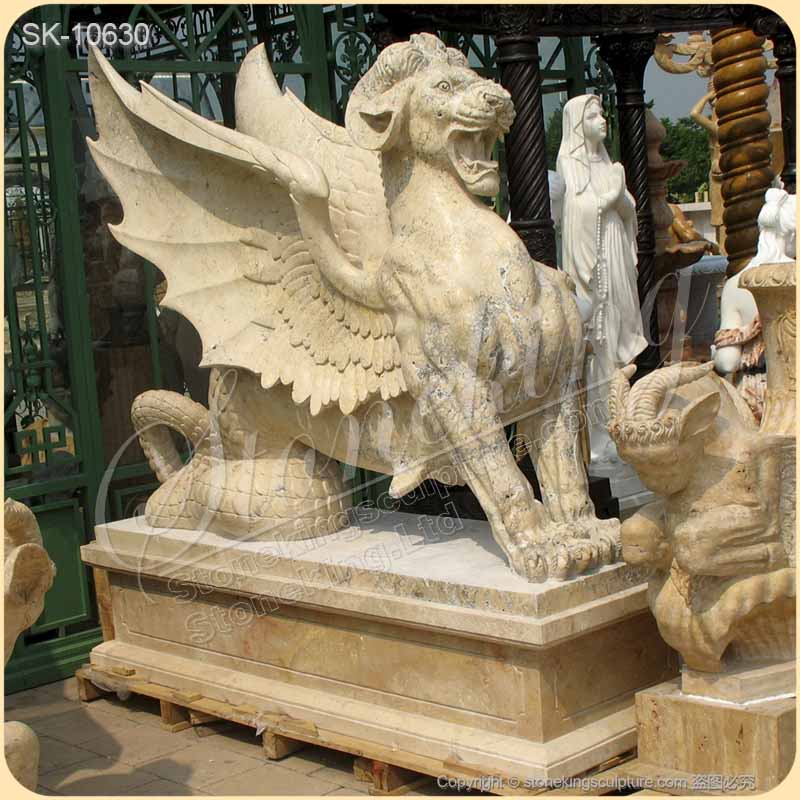
For many indigenous cultures, animals are seen as spirit guides or symbols of natural forces. Architecturally, stone animal statues have been used to adorn temples, palaces and public spaces, adding both grandeur and symbolism to these structures. The use of animal motifs in architectural design not only enhanced the visual appeal but also reinforced the cultural values and beliefs of the time. Museums and archaeological sites around the world house these statues, allowing contemporary audiences to connect with historical legacies and appreciate the artistry and craftsmanship of past civilizations.
Stone animal statues also reflect the cultural identity and legacy of their societies. In medieval European cultures, they could be found in cathedrals and castles often depicted mythical creatures and heraldic symbols, illustrating the fusion of local folklore with religious and noble traditions. In Native American cultures, animal totems carved from stone often represented clan identities, ancestral spirits and spiritual connection between humans and animals.
In contemporary contexts, stone animal statues continue to be appreciated for their artistic value and historical insight. They are often in museums, educational settings and cultural heritage sites, offering a tangible connection to the past and a means of understanding the complexities of ancient societies.
The sizes and marble material of the large white marble lion statues could be customized to make them distinct and meaningful to your specific purpose or location. For the unique features or details you want, such as the mane style, facial expression, pose or any other distinctive characteristics, they could be carved according to your personal preferences and cultural significance. We have the expert design team to make detailed drawing if you have any pictures or sketch and ODM services are offered.







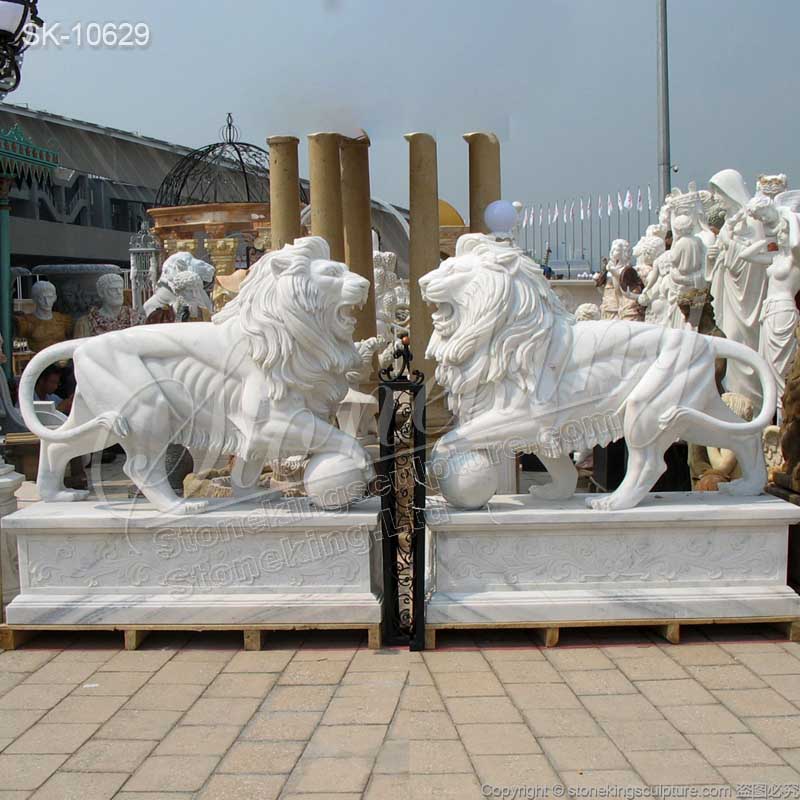
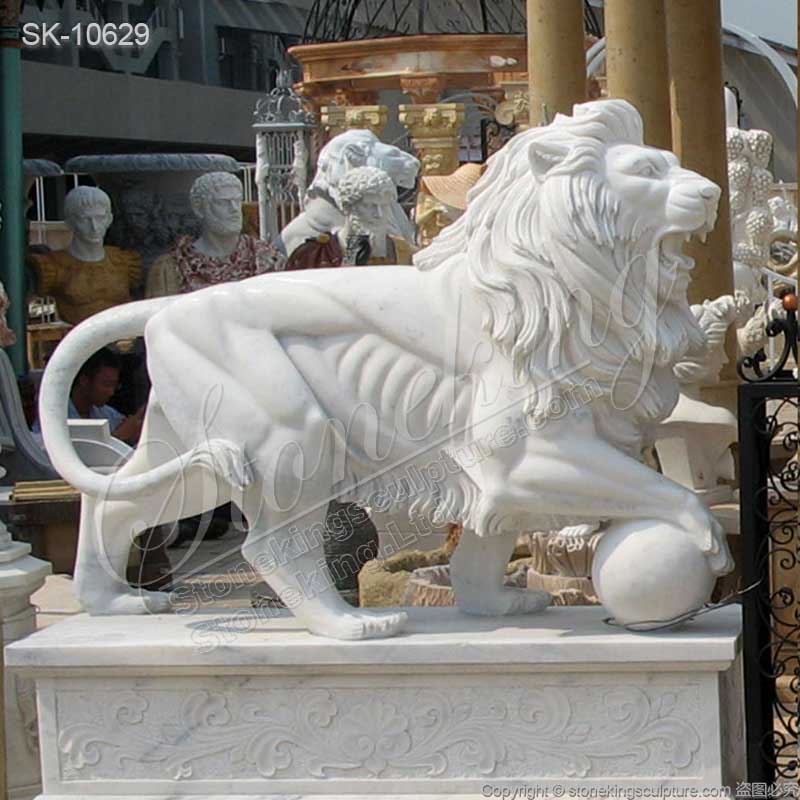
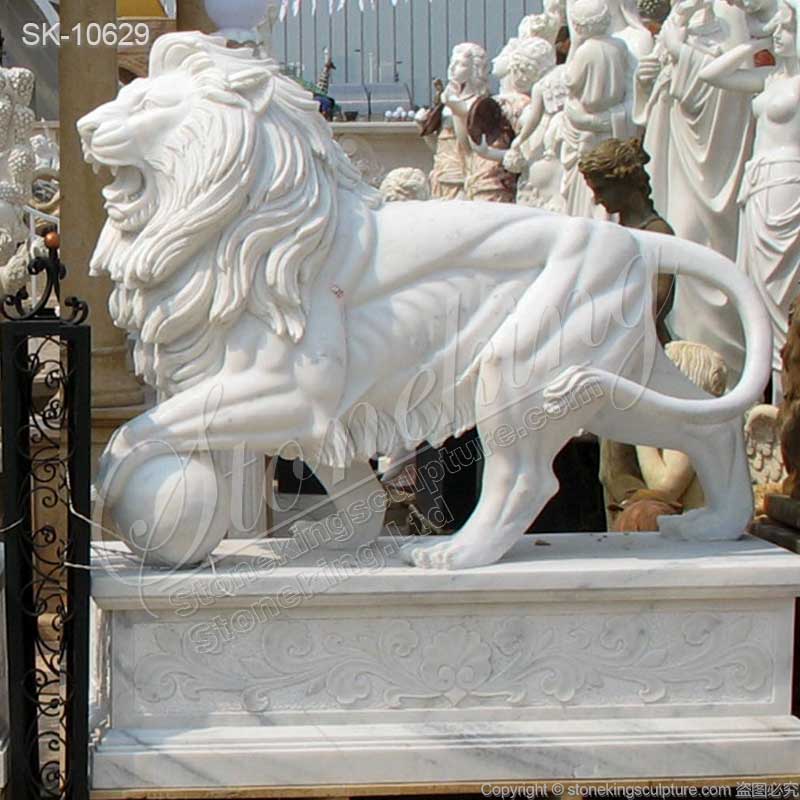
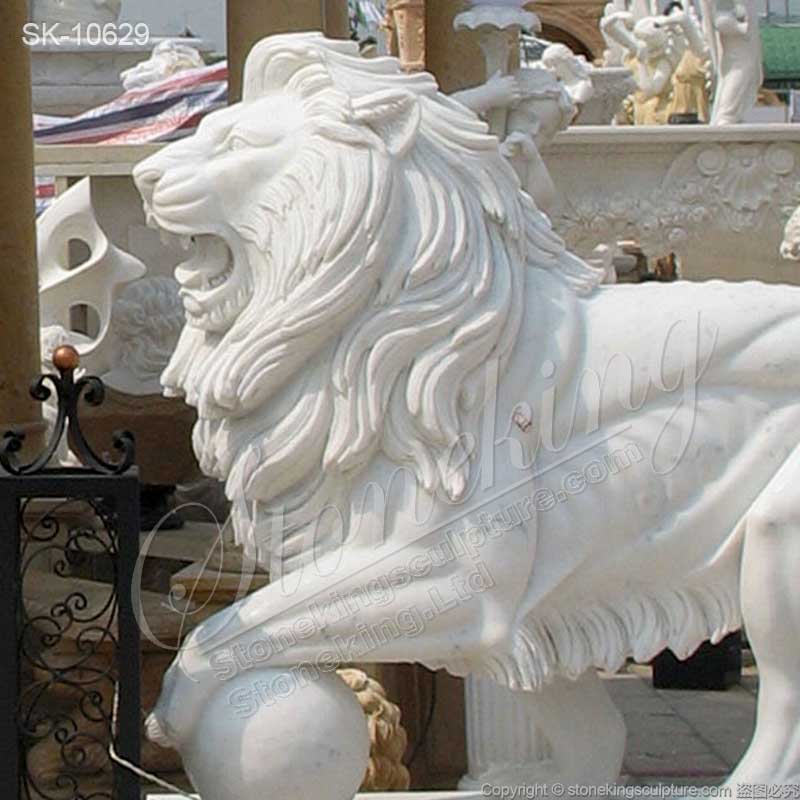
 Add to Inquiry List
Add to Inquiry List 